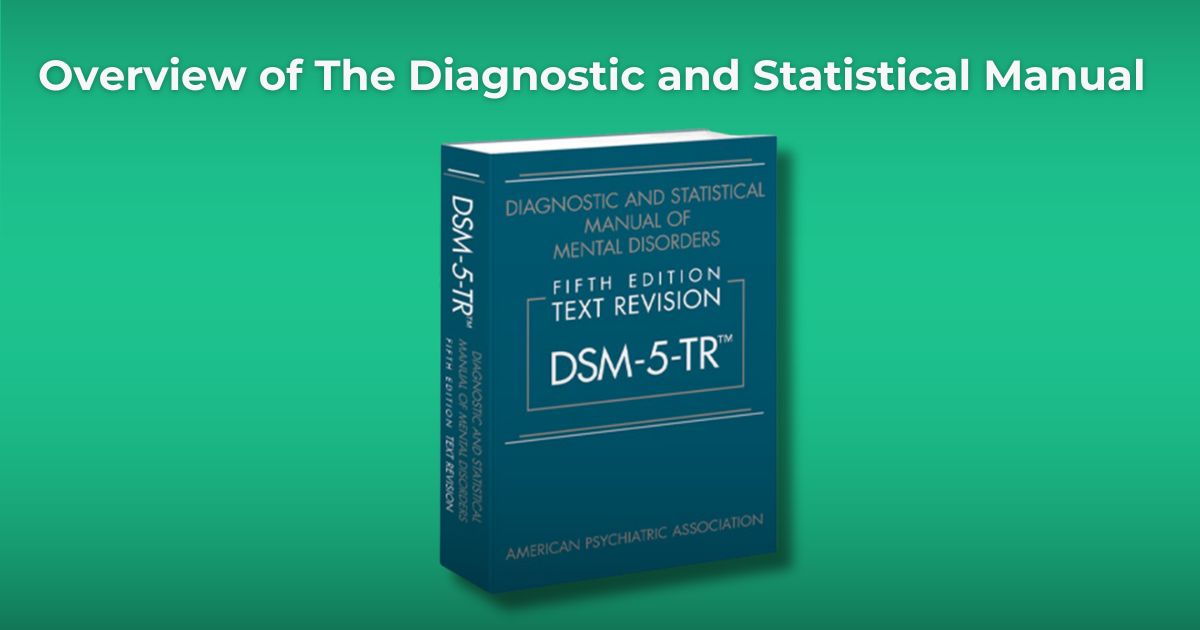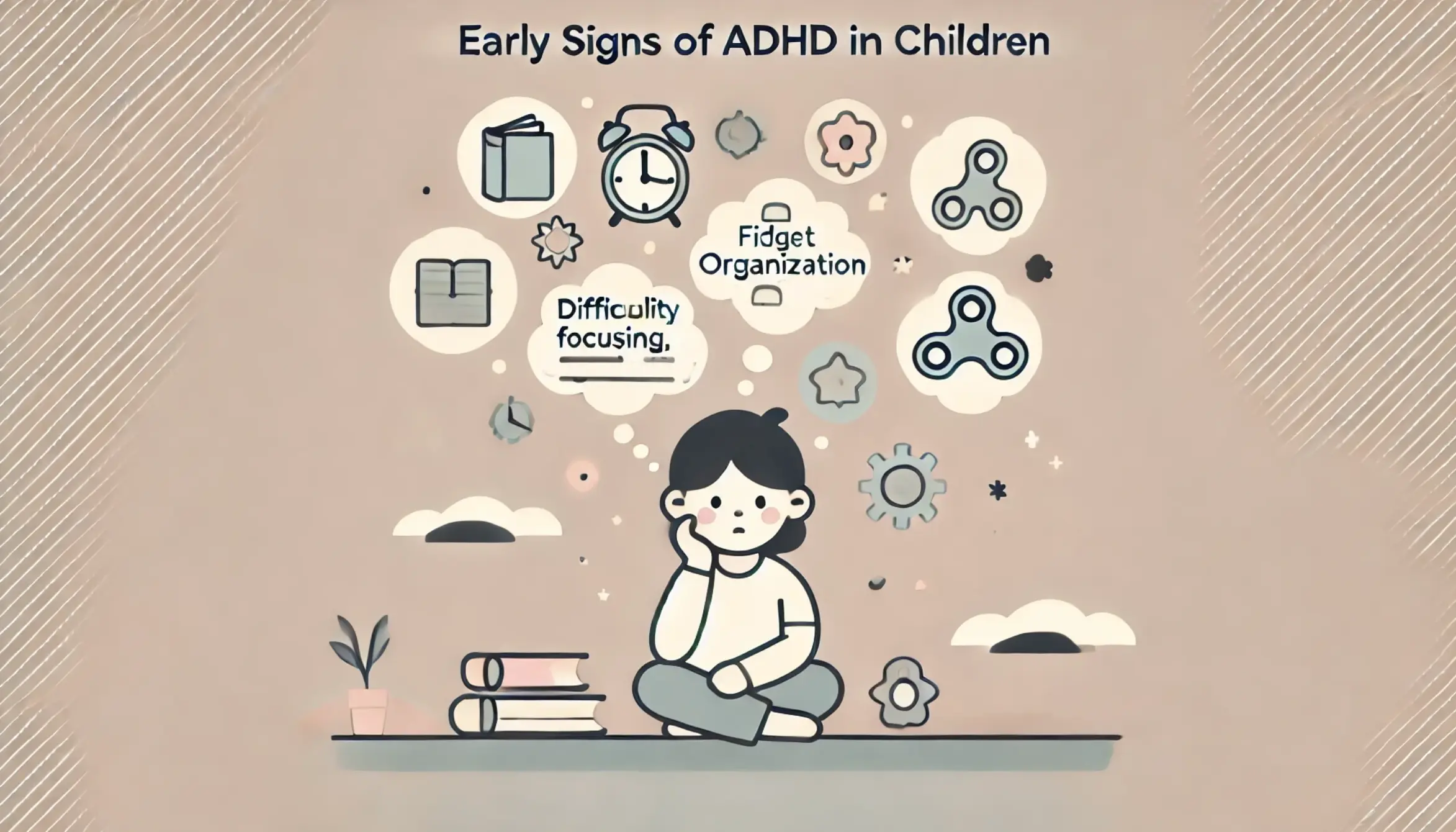The Diagnostic and Statistical Manual of Psychiatric Conditions, commonly referred to as the DSM-5-TR, stands as the standard reference compendium within mental health and neurocognitive disorders, meticulously crafted and regularly updated by the esteemed American Psychiatric Association.
Serving as the cornerstone guide for mental health professionals across the United States, its comprehensive insights and diagnostic criteria delineate the intricate nuances of various mental illnesses and brain-related conditions.
With the latest version of the DSM-5-TR, published in 2022, mental health providers can access updated frameworks and refined guidelines that reflect the latest advancements in the field.
As we embark on this journey of exploration, we invite you to join us and learn more!
What Is the DSM or DSM-5-TR?
The Diagnostic and Statistical Manual of Mental Disorders (DSM) is a comprehensive classification system and diagnostic tool used by mental health professionals worldwide.
Developed by the American Psychiatric Association, the DSM categorizes and defines various mental health disorders, providing standardized criteria for diagnosis. The DSM-5, the latest edition released in 2013 with a text revision in 2022, represents the culmination of extensive research, clinical expertise, and collaboration within psychiatry.
Within its pages, the DSM-5-TR outlines criteria for diagnosing a wide range of mental health conditions, including mood disorders, anxiety disorders, psychotic disorders, neurodevelopmental disorders, and more.
It serves as a vital resource for clinicians in providing diagnoses, assessing social and occupational impairment, conducting assessments, determining treatment plans, and facilitating communication among healthcare professionals.
Despite its widespread use and influence, the DSM is not without controversy, with debates over diagnostic criteria, cultural relevance, and the medicalization of normal human experiences. Nevertheless, the DSM-5 remains a foundational tool in the field of mental health, providing a framework for understanding and addressing psychological distress and dysfunction.
DSM History
Originally published in 1952, the Diagnostic and Statistical Manual (DSM) has undergone several updates. The DSM-I introduced 102 diagnostic categories, which expanded to 182 in the DSM-II, 265 in the DSM-III, and 297 in the DSM-IV, reflecting a growing understanding of mental health disorders.
A primary concern surrounding the DSM has been its validity. As a result, the National Institute of Mental Health (NIMH) initiated the Research Domain Criteria (RDoC) project. This project aimed to revolutionize diagnosis by integrating genetics, imaging, cognitive science, and other data levels for a more biologically grounded classification system.
In 2013, then-NIMH director Thomas Insel and APA president-elect Jeffrey Lieberman issued a joint statement endorsing the DSM-5 as the best available clinical diagnostic tool. They emphasized that the DSM-5 and RDoC are complementary frameworks, not competitors, in understanding and treating mental disorders.
While the RDoC was not intended to be a diagnostic tool to replace the DSM, the National Institute of Mental Health underscores its role as a research framework to enhance comprehension of mental health conditions, advocating for a more nuanced approach to mental health research and treatment.
Evolving Perspectives: Key Changes in the DSM-5 in the DSM-5-TR
The DSM-5, the fifth edition of the Diagnostic and Statistical Manual of Mental Disorders, introduced several changes reflecting evolving perspectives on mental health. One significant shift was the reorganization of diagnostic categories, aiming for greater clarity and clinical utility.
Additionally, the DSM-5 incorporated dimensional assessments to capture the spectrum of symptom severity.
Notably, it revised criteria for several disorders, such as autism spectrum disorder and post-traumatic stress disorder, to align with current research and clinical understanding. These changes signify a dynamic approach to diagnosis, emphasizing the importance of staying abreast of growing knowledge and perspectives in mental health.
Notable Changes in the DSM-5-TR
The DSM-5-TR, or Text Revision, brought forward notable changes reflecting advancements in mental health research and clinical practice. One significant update was the refinement of diagnostic criteria for various disorders, including mood, anxiety, and neurodevelopmental disorders.
Additionally, the DSM-5-TR introduced updated terminology and classifications to better align with current scientific understanding.
The revision also emphasized the importance of cultural sensitivity and context in diagnosis and treatment. By incorporating these changes, the DSM-5-TR continuously serves as a comprehensive and dynamic tool for mental health professionals, facilitating accurate assessment and effective intervention in diverse clinical settings.
Trust APS for Expert Autism Evaluations in Oakland
For comprehensive autism evaluations in Oakland, CA, trust the expertise of APS. Our team dedicates itself to providing thorough assessments, incorporating the latest diagnostic criteria and methodologies outlined in the DSM-5-TR.
We understand the importance of early intervention and tailored treatment plans for individuals on the autism spectrum. Contact us today to schedule an evaluation and take the first step toward understanding and supporting yourself or your loved one.





